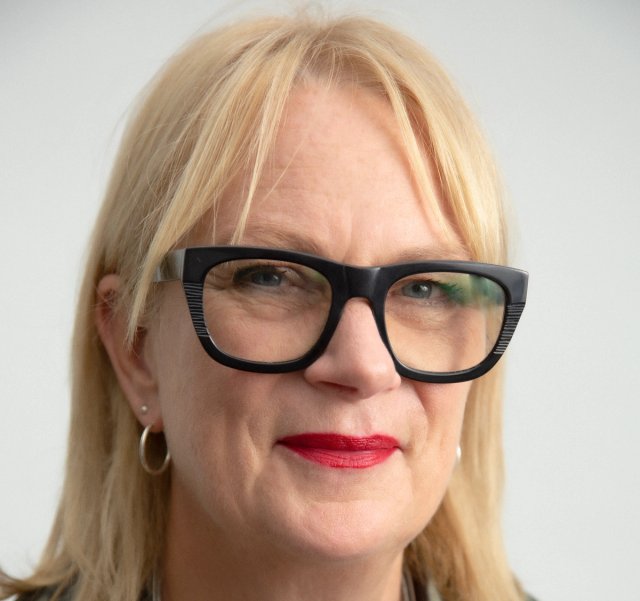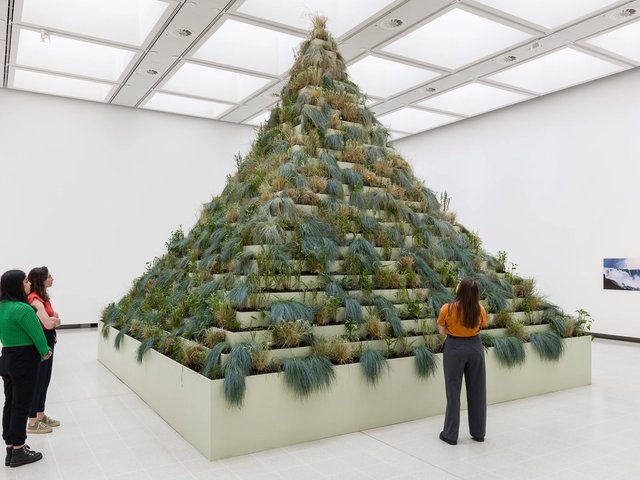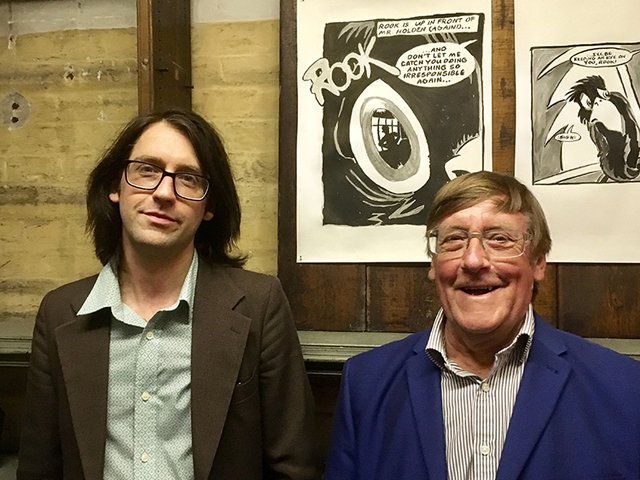Whether or not we like the idea, we are all animals. And as such we are all inextricably part of the natural world, even while we seem to be doing our damnedest to wreck it. This essential—albeit often fraught— interconnectedness of homo sapiens with everything else that cohabits the planet is a major strand running through the work of the Swedish artist Ingela Ihrman. Whether in film, sculpture, prints or performance, she reaffirms how being entwined with nature is a crucial, yet complicated component of human existence.
No shippers were needed for the giant human skeleton Ihrman has recently made for the Eden Project in Cornwall—an experimental garden and eco-tourism attraction which lies in a small wooded area on the Eden Estate’s outer perimeter. And no deinstallation crews or storage will be necessary, either. Made from the trunk, limbs and branches of a single ash tree that had already been felled nearby, the giant figure will remain in situ until it rots back into the soil, easy on eye and a source of nourishment for birds, beasts and bugs.“
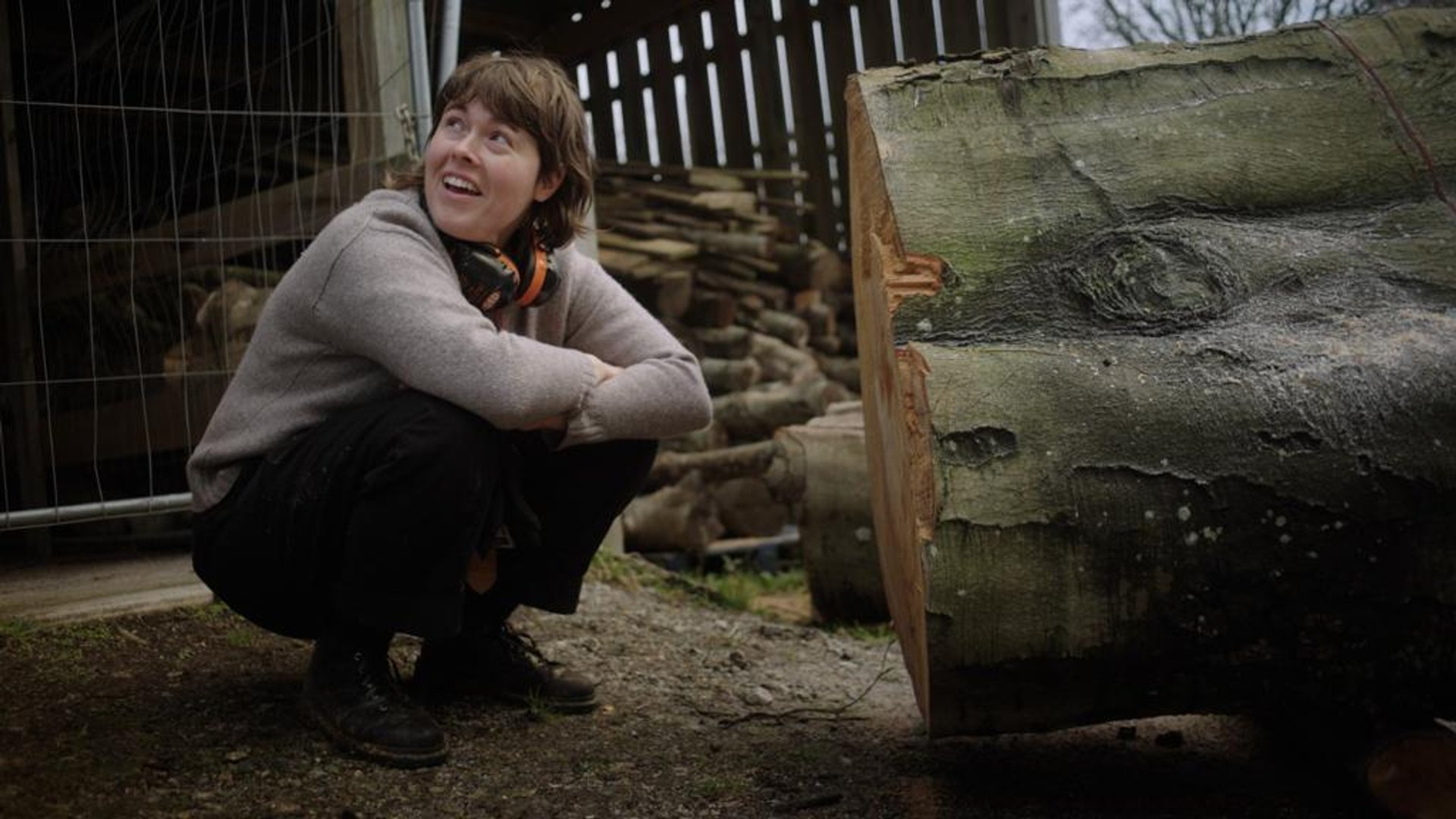
Ingela Ihrman with the felled tree that forms part of her show First Came the Landscape
That's the way I wanted to work: not adding, but just reorganising what was already there and creating possible meanings out of that,” says Ihrman, who last year made an earlier version of this low intervention, zero carbon piece in the Uppsala Art Museum in Sweden using nearby elm trees that had been infected by Dutch Elm disease.
Ihrman sees these biodegradable figures as a way to "approach death”, with their intricately arranged wooden bones resembling both the archaeological excavation of a giant’s grave and as well as acting as an organic memento mori, their decomposing components a reminder that, as the Bible tells us, “all are from the dust and to dust all return”. Their title, First Came the Landscape, further underlines our human transience, pointing to the fact that ours is a very brief experience of time and place. “The skeleton is a compass, pointing in all directions’ Ihrman states, “it’s a rearrangement of matter that is both something and everything.”
At Ihrman’s first solo UK exhibition at Gasworks Gallery in London, the relationship between humans and the natural world is more problematic. The show focuses on the tropical fruit-eating oilbirds who live and breed in pitch dark caves and communicate via loud clicks and shrieks. In the past, these caves were raided by local human populations and the fat from the unusually plump oilbird chicks extracted as a source of lamp oil—hence their name.

Ingela Ihrman, Nocturne, 2023. Exhibition view Photo: Andy Keate
At Gasworks, Ihrman has transformed the galleries into a darkened oilbird cave in which giant paper feathers eerily float, and a scarily lifelike, scaled-up chick, fashioned from stitched scraps of fabric, curls up on a plinth. The same nestling is used as a glove puppet in the film of a performance featuring Ihrmanas a monstrous mother oilbird with massive beak, huge black shining eyes and plumage fashioned from the feathery flower heads of reeds.
The artist-oilbird vigorously crams an assortment of fruit—mangoes, avocados, an entire grapefruit—into her avian offspring’s gaping beak, only for it then to regurgitate a stream of husks and stones. In between the Ihrman-oilbird anxiously clicks a light switch, uneasy in both light and dark, with viewers also provided with clickers, to communicate in unison. The spectacle is both violent and tender, caring and disconcerting, with us human mothers (or me at least) very able to relate to the ambivalent feelings generated by such a vulnerable but also demandingly rapacious infant. The fate of so many of these chicks, born and raised in darkness only to be wrenched from their nests and their bodies boiled to provide a means of illumination for humankind, also provides a grim undertow to this demonstration of human-avian maternity.
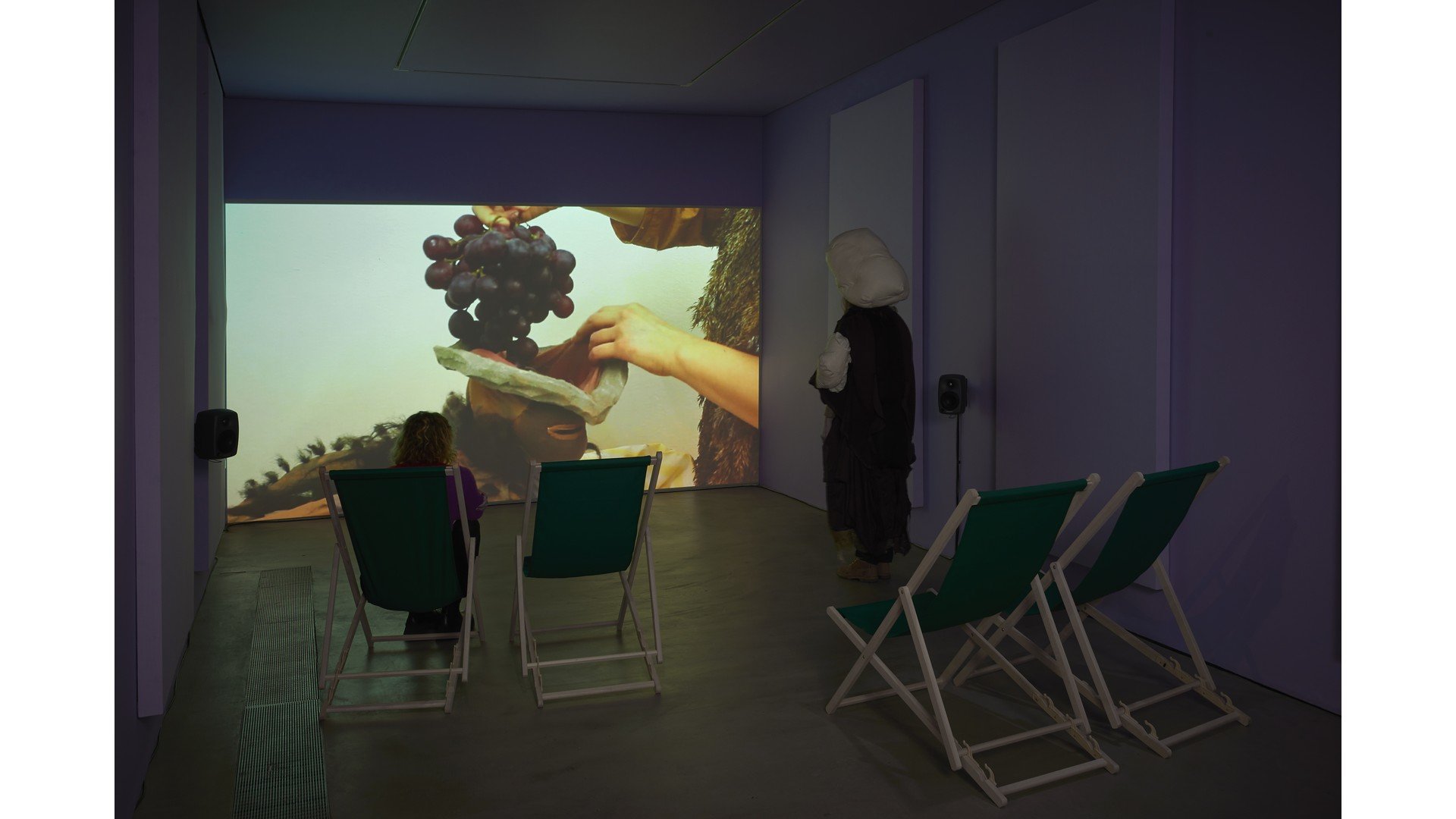
Ingela Ihrman, Nocturne, 2023. Exhibition view Photo: Andy Keate
Ihrman learned about oilbirds via the films of Jan Lindblad, a Swedish naturalist also known for his animal imitations. The Gasworks show opens with the (fictitious) proposition that Lindblad met his end by being devoured by a giant anaconda on one of his Amazonian expeditions. An early Ihrman film made in 2009 invites us to share the experience by imagining a gastroscopic journey through the digestive tract of this serpent. Then, to enable us to further relate to this ultimate immersion into the animal kingdom, visitors are also invited to become the naturalist’s snake-digested remains by donning a new padded wearable sculpture entitled Lindblad Spirit (Anaconda Faeces).
This dramatic demise of the animal-loving naturalist and the invitation to transform gallery goers into snake poo could be construed as either a glorious grand finale for a man who famously felt closer to other species than his own or as a gruesome example of the natural world giving us nasty meddling humans our come-uppance. Or maybe a bit of both. Bottom line is that if we all realised that being alive, social and human cannot be separated from how things are done in the animal kingdom, then the world would indeed be a better place for everyone – and everything - that inhabits it.
• Ingela Ihrman: Nocturne, Gasworks, London, until April 30
• First Came the Landscape, Eden Project Cornwall; Ihrman also has work in Super Natural at Eden Project, until 20 May 23




